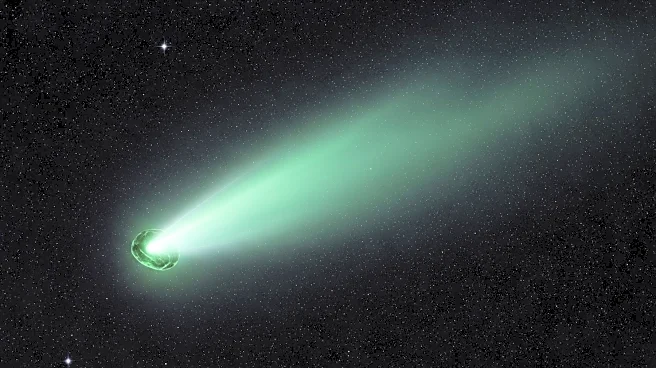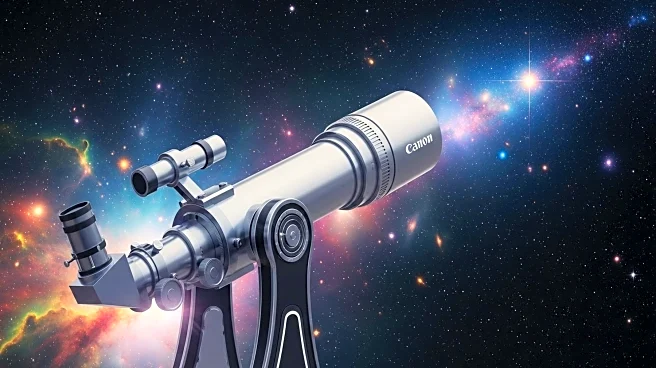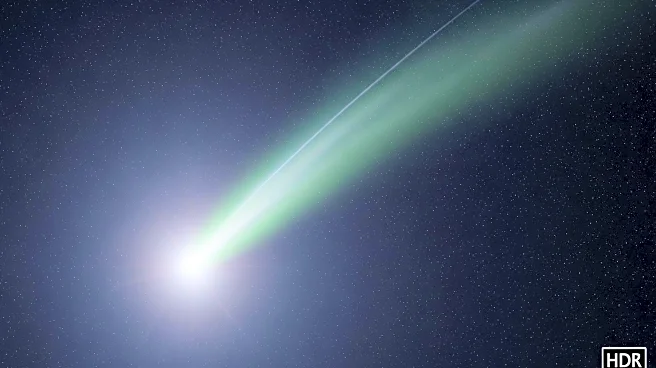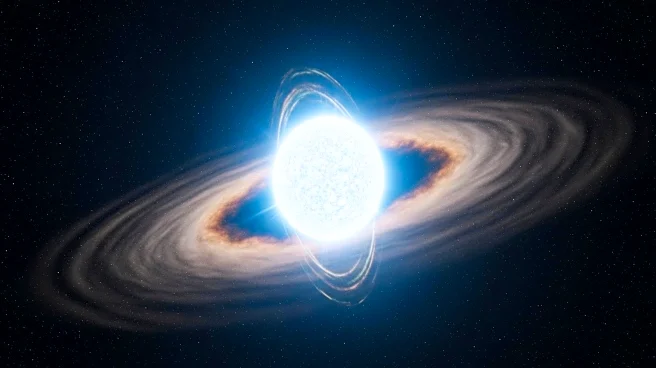What is the story about?
What's Happening?
The interstellar object 3I/ATLAS, comparable in size to Manhattan, is exhibiting a green hue as it approaches the Sun. This change is attributed to a significant increase in Cyanide and Nickel outgassing, as reported by scientists from the European Southern Observatory's Very Large Telescope in Chile. The object, initially red, has turned green over the past two weeks due to a process that appears to be activated by temperature. Harvard astrophysicist Avi Loeb explained that this phenomenon is akin to a threshold effect, where a minimum temperature is required to trigger the process. The ATLAS team suggests that the change is due to a shift from sunlight scattering by dust to the production of small, bright icy grains, altering the opacity of the materials shed by 3I/ATLAS. Notably, the object is emitting its own light and shows an extension of scattered light towards the Sun, which is atypical for comets.
Why It's Important?
The observations of 3I/ATLAS provide valuable insights into the behavior of interstellar objects as they interact with the solar system. The unusual characteristics of 3I/ATLAS, such as its self-emission of light and the direction of its scattered light, challenge existing cometary models and could lead to new understandings of interstellar phenomena. This discovery is significant for the scientific community as it offers a rare opportunity to study an interstellar object passing through the inner solar system. The findings could have implications for future research on the composition and behavior of similar objects, potentially influencing theories about the formation and evolution of celestial bodies.
What's Next?
Further observations and studies are expected as 3I/ATLAS continues its journey through the solar system. Scientists will likely focus on understanding the processes causing the object's color change and light emission. The data collected could contribute to refining models of interstellar objects and their interactions with solar radiation. As the object passes close to several planets, additional observations may provide more detailed information about its composition and behavior, enhancing our understanding of such rare celestial visitors.
AI Generated Content
Do you find this article useful?














